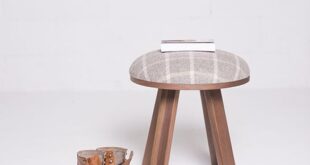
Mid-century home decor refers to a design style that emerged in the mid-20th century, particularly in the 1940s, 50s, and 60s. It is characterized by clean lines, minimalistic furniture, and a focus on functionality and simplicity. Mid-century decor often features elements such as geometric shapes, organic forms, and bold colors. Popular materials include natural wood, plastic, and metal, with designers such as Charles and Ray Eames, Eero Saarinen, and George Nelson being key figures in this movement. This style is beloved for its timeless appeal and ability to seamlessly blend with modern aesthetics. Mid-century decor is often seen in sleek furniture pieces like teak credenzas, iconic lounge chairs, and coffee tables with hairpin legs. Many homeowners appreciate the retro yet contemporary look that mid-century decor brings to their living spaces, creating a sense of nostalgia and sophistication. Whether in a true mid-century modern home or as accents in a contemporary setting, this design style continues to be popular and influential in interior design today.
Mid-century home decor is a design style that originated in the mid-20th century, around the 1940s to the 1960s. This style is characterized by clean lines, minimalist forms, and functionality. Mid-century decor often incorporates elements such as geometric patterns, sleek furniture, and natural materials like wood and leather. The overall aesthetic is a blend of vintage charm and modern simplicity, creating a timeless appeal that continues to be popular today.
One of the key features of mid-century home decor is its emphasis on open spaces and a seamless flow between indoor and outdoor areas. Many mid-century homes feature large windows, sliding glass doors, and outdoor living spaces that blend seamlessly with the interior. This design philosophy brings in natural light and creates a feeling of spaciousness and connection with the outdoors. Additionally, mid-century homes often incorporate elements of nature into their design, such as indoor plants, natural wood accents, and earthy color palettes, further enhancing the overall sense of harmony and balance in the space.
Another defining characteristic of mid-century home decor is its focus on functionality and practicality. Furniture and decor pieces from this era are designed to be both stylish and utilitarian, with a focus on clean lines, simple shapes, and thoughtful craftsmanship. Mid-century designers like Charles and Ray Eames, Eero Saarinen, and George Nelson prioritized comfort and functionality when creating their iconic designs, resulting in pieces that are not only aesthetically pleasing but also practical and comfortable to use. This emphasis on functionality and practicality continues to be a hallmark of mid-century home decor, making it a timeless and enduring design style that is as relevant today as it was decades ago.
 home decor trends
home decor trends



